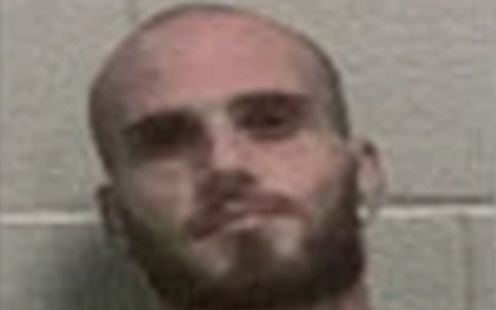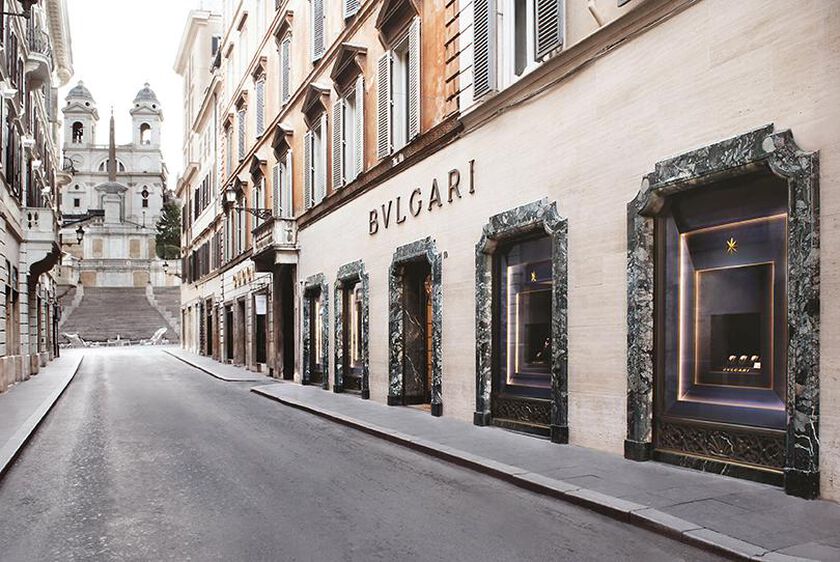By Thom L. Jones for Gangsters Inc.
According to the official web page of the New York Police Department:
“There is no delineated time frame for cold cases.”
The killing of police Lieutenant Joseph Petrosino on the evening of March 12, 1909, in the city of Palermo, Sicily, is perhaps the most famous cold case in their files. He was the first and only New York police officer, murdered overseas in the line of duty. Shot four times as he walked on a public square, late at night.
A complex case involving Mafia hoodlums based in New York and Sicily, it filled newspapers around the world with lurid headlines for days. It remained unsolved for 105 years. And then, it seems, someone finally reveals the name of Petrosino’s killer.
For background and more details, check out this story on Mob Corner: The Sun King of the Mafia.
Petrosino, head of New York’s Italian Squad, had gone to Italy to trace and arrest Mafiosi, who had been involved in various criminal activities in America’s biggest city. Shot dead near the city waterfront, although there were prime suspects, no one faced trial, and the murder remained officially a cold case.

Until 2014.
Between 2014 and 2015, Italy’s law enforcement agencies combined to attack the Mafia in Palermo.
They table the blitz “Operation Apocalypse.” For the mob, it is all of that.
The Carabinieri (military police), The Flying Squad wing of the state police and The Guardia Di Finanza (finance police) join forces. Their target is a group of clans long established in the city and suburbs to the north: Resuttana, San Lorenzo, Aquasanta, Arnella, Partanna and Mondello. Because of the operation, Di Finanza arrests and brings almost a hundred members to trial, with most of them being convicted on various charges, especially extortion, which is the preferred source of income for the mob.
In among these indicted suspects are two men. They are cousins and run the cosca of Arnella, a small seaside town to the north of the city center.

Gregorio Palazzotto, the eldest at thirty-seven, is the boss. In the mob they know him as “Celestial Eyes.” Domenico, ten years younger, his number two, they call him “The Accountant.”. Both are a different Mafia than the ones that rose to prominence in the latter years of the 20th century. The old guard. The men steeped in the tradition of the honored society. But in the new century, things are different.
Careers in Cosa Nostra come and go at a fast rate. They updated the organization charts of Mafia families according to the velocity and success of police raids. Because of the continuous arrests, they recruit picciutieddi, the little boys, who they would normally carefully monitor and evaluate before accepting them into the secret society, just like in the previous generations. Often, these recruits will be unsuitable and unreliable. The old guard struggle to maintain order among this destabilizing activity.
The Palazzotto cousins are mafia bosses. They both host Facebook pages, use WhatsApp, send texts. This is almost akin to the Kierkegaardian Paradox-the attempt to discover something that thought cannot think- out of this world.
A mob boss soliciting likes and expressing opinions for all the world to see. In an organization that for generations prides itself on omerta, the concept that silence is golden, this is one for the books. The cousins plaster their FB walls repeatedly with images of wives and girlfriends. Their comments would make Salvatore Riina, perhaps the most fearsome of the older generation of Mafiosi, to not only turn over in his grave, but probably die again in shame.
Using social media makes it that much easier for law enforcement to track them.
Domenico also likes to boast and blab to his friends and colleagues. Police of the Guardia Di Finanza catch him on a wiretap one day, in February 2013, doing just that. According to the source, this is what he says:

“… sometimes I show you the books… my family is in the books… in the mafia books… we have been mafiosi for a hundred years…”Then he brought up his father’s uncle, Paolo Palazzotto, who died in 1958. “And his words write a page of history. It would have been the uncle, in fact, on the orders of Vito Cascio Ferro, who killed Petrosino: “… we are celebrating the centenary… my father’s uncle was called Paolo Palazzotto… he committed a murder… the first murder… of the first policeman killed… in Palermo… my uncle killed him… my father’s uncle… He came down from America to investigate… so he killed him on behalf of Cascio Ferro.”

And there it is. The denouement to end them all. The ultimate confirmation. 104 years earlier, one of America’s Secret Service Agents, reported to his boss details of remarks by Ignazio Lupo, an aide to Giuseppe Morello, the alleged boss of the New York Mafia, cleaned from an informant in the mob underworld of New York. The source was Antonio Comito, one of the Morello gang, the printer and counterfeiter:
“How did you like the Petrosino affair? No one knows now, and no one will ever know.”
Maybe, in fact, he was the speaker of the truth. Many Italian police experts and law enforcement officers cast doubts on the comments made by the younger Palazzotto. Some claimed his family was not related to Paolo, the alleged killer. Others said that it was an attempt by an insecure and unbalanced mobster to establish his Mafia “pedigree.”
Following the detective’s murder, Lt. Antonio Vachris, originally known as Vacarezza, the head of the Italian Detective Bureau in Brooklyn, stated that police detectives in Palermo were supposed to accompany Petrosino. He suspected someone betrayed Petrosino within the Palermo police department and ultimately lured him to his death.
“He knew, as I do,” Vachris told The New York Times, “that Palermo is the worst hole in Southern Italy for the Mafia. In that city, there are at least 100 criminals of the most desperate class who knew Petrosino. Because of his work, many of them had been deported from this country, and he was a marked man with them.”

Paolo Palazzotto, then aged twenty-seven, had lived in Brooklyn at some stage under the name of Giovanni Campanilo, before the efforts of the Italian Squad had resulted in his deportation. He had been involved in a gang controlling forced prostitution. He had passage on the same ship Petrosino would sail on, the Duca Di Genova, in February 1909, but missed his voyage as he was in hospital recovering from a beating inflicted on him by the detective.
Police commissioner, Baldassare Ceola, transferred to Palermo from Milan, with a brief to clean up a corrupt police force, leads the investigation into the murder of Petrosino, rounding up 140 suspects.

Ceola concludes that Giuseppe Morello, a Mafia killer from Corleone, currently in New York, is the catalyst in the conspiracy to kill Petrosino that also involves Don Vito Cascio Ferro, probably the most powerful Sicilian cosca leader of the age. *
So many suspects, so little hard evidence to lock them in together. The investigation trailed off and concluding preliminary proceedings, the Court of Palermo, on July 22 1911, release all fifteen men accused of being instrumental in the murder of Petrosino for lack of evidence. Carlo Constantino, Antonino Passananti and Paolo Palazzotto are strong suspects as the men who set up and kill Petrosino.
The most notorious murder in the history of New York’s police starts with multiple bangs and ends in a whimper.
And there is perhaps even more mystery surrounding the Petrosino affair. Among the usual suspects was one little referred to to-day: Francesco Filastò, sometimes referred to as the gray eminence of ‘ndrangheta. The deputy commissioner of Reggio Calabria referred to him as “the supreme leader of the Calabrian underworld in America.” In 1930, after returning to Italy to escape criminal charges, he was arrested and accused of Petrosino’s murder, based on charges laid by Antonino Musolino, cousin of the infamous Calabrian brigand, Giuseppe Musolino. The murder charges were eventually dropped.
The testimony of Antonino Musolino indicates that the plan to murder Petrosino was decided well in advance pointing to complicity among influential players capable of feeding first-hand information on the detectives mission.
Morello is himself the victim of a mob killing in New York in 1930. Cascio Ferro dies incarcerated somewhere in Italy during the allied invasion, perhaps in 1943. We don’t know for sure where, but most sources claim Pozzuoli Prison, near Naples.
Paolo Palazzotto creates a low profile in the decades that follow the murder of Petrosino. His final years seem to be brutalized by alcohol and endless fights in taverns. He dies in 1958.

Another suspect, Antonino Passananti, lives until he is ninety. Then in 1969, commits suicide. By gun, of course. Constantino sometime in the 1930s dies in a mental hospital, going crazy from the effects of syphilis.

Gregorio and Domenico Palazzotto are presumably serving out their sentences in prison, somewhere in Italy.
250,000 attended the funeral of Joe Petrosino, held in New York, in April, according to news reports. This would have made it the second most attended for a public figure in America after President Lincoln, in 1865. His killers die violently or in the obscurity of their evil lives. No state funerals for them.
In the end, it was all about the pursuit of power. It had driven the criminals to steal, extort, manipulate, and kill. On two continents. It had consumed Joe Petrosino in his urge to track down and arrest, through the power of the law, the offenders he hated with a passion beyond his job. A passion that, in the end, killed him. The revelations of a man, over a hundred years after the event, only confirms that power, not authority, was paramount in the strange worlds they frequented.
Hope lies to mortals
And must believe her
But Man’s deceiver
Was never mine.
- E. Housman
* Critchley, David. The Origin of Organized Crime in America. The New York City Mafia, 1891-1931. Routledge. New York. 2009.
References:
Guadision, Erole Joseph. The Detective in the Derby.
Anti-Mafia website. June 23, 2014. Apocalypse in Palermo.
Telegraph, UK. Aug 4, 2014. Mafia’s Facebook generation posts lead.
Benigno, Francesco. Rethinking the origins of the Sicilian Mafia. OpenEdition Journals. Vol. 22. N.1
La Reppublica. June22, 2014. Bug Reveals Joe Petrosino Killer after 100 years.
L’Occhia. March 12, 2019. We Remember Joe Petrosino.
PoliziaPenitenziara. 20 September 2018. Petrosino: The killer discovered after 100 years.
Maine Public Library. June 24, 2014. Clues to Slaying of NYPD Officer a century ago.
Petaco, Arrigo. Joe Petrosino. MacMillan, New York. 1974.
New York Magazine. June 22, 2014. NYPD Detective’s murder solved after 105 years.
https://www.santiebeati.it/dettaglio/94628
Anti-Mafia website. March 12, 2022. Joe Petrosino: the policeman who challenged the criminal system.






Leave a Reply